TESTING ANATOLIAN NURTURING ABILITY
by Erick Conard
March 21, 2021
of LUCKY HIT RANCH

LUCKY HIT'S Shadow TOKAT (TOKAT)
on January 8, 2005 with one of his pups.
TOKAT was an incredible Working Anatolian with a Deep Love for his goats.
He was also proven to have superior nurturing ability not only with his charges but also with his puppies!
TOKAT is pictured here with his goats, llamas, one of his puppies and
Autumn, the pups' mom.
|
WARNING! Not all Anatolians are trustworthy with puppies and young Anatolians. Those that aren't
trustworthy can kill or injure puppies. For example, I sold a wonderful Anatolian pup to
a woman who fell in love with the puppy. The woman decided she wanted another and decided
to save money by obtaining an adult rescue Anatolian female. The rescue female and the
puppy seemed to be getting along great for a few months. When the puppy was about six months old, the rescue female
got mad for no apparent reason and killed the puppy. Anatolians are not all the same. Just because you have an Anatolian
doesn't mean you have one with the training and genetics that Lucky Hit Anatolians have!
Please keep this in mind if you are a breeder and want to test your Anatolians by placing
them with their pups. Proceed with caution! If too uncertain of your dog's ability to
be safely placed with puppies, consider NOT BREEDING that dog!
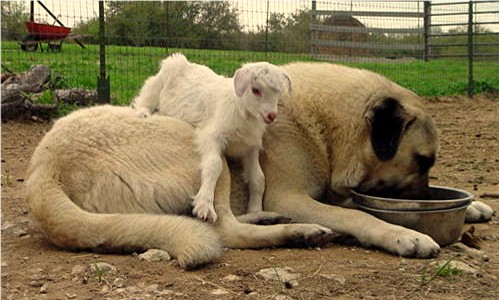
LUCKY HIT'S Shadow TOKAT (TOKAT)
on March 26, 2004, calmly eating while a kid plays on and around him.
It important to note that superior nurturing ability is seen in both an Anatolians
interactions with puppies as well as their interactions with their kids and/or lambs!
|
I know some people fear the idea of placing an Anatolian male in with that Anatolian's pups!
However, my theory is that if an Anatolian male cannot be trusted with his pups, his level of
nurturing ability is not sufficient for him to be bred.
Some Anatolian males cannot be trusted with puppies! Don't ever breed those males!
|
In the United States, most of us don't live with the dangerous predator situation common in Turkey
throughout the thousands of years Anatolians were developed. Even so, it is vital
to Anatolian Breed Preservationists to evaluate an Anatolian's internal power and dedication to their
charges. Without sufficient internal strength in the dogs being considered as potential
breeding prospects, the breed will not maintain the full protective powers of the original Turkish
Anatolians, essentially turning the Anatolian into another ruined breed!
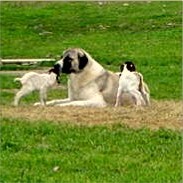
LUCKY HIT'S Shadow BEAU (BEAU)
on February 28, 2003, exudes safety to the kids in his pasture.
I have noticed that the manner an Anatolian interacts with kids is similar to the manner in which that dog interacts with puppies!
|
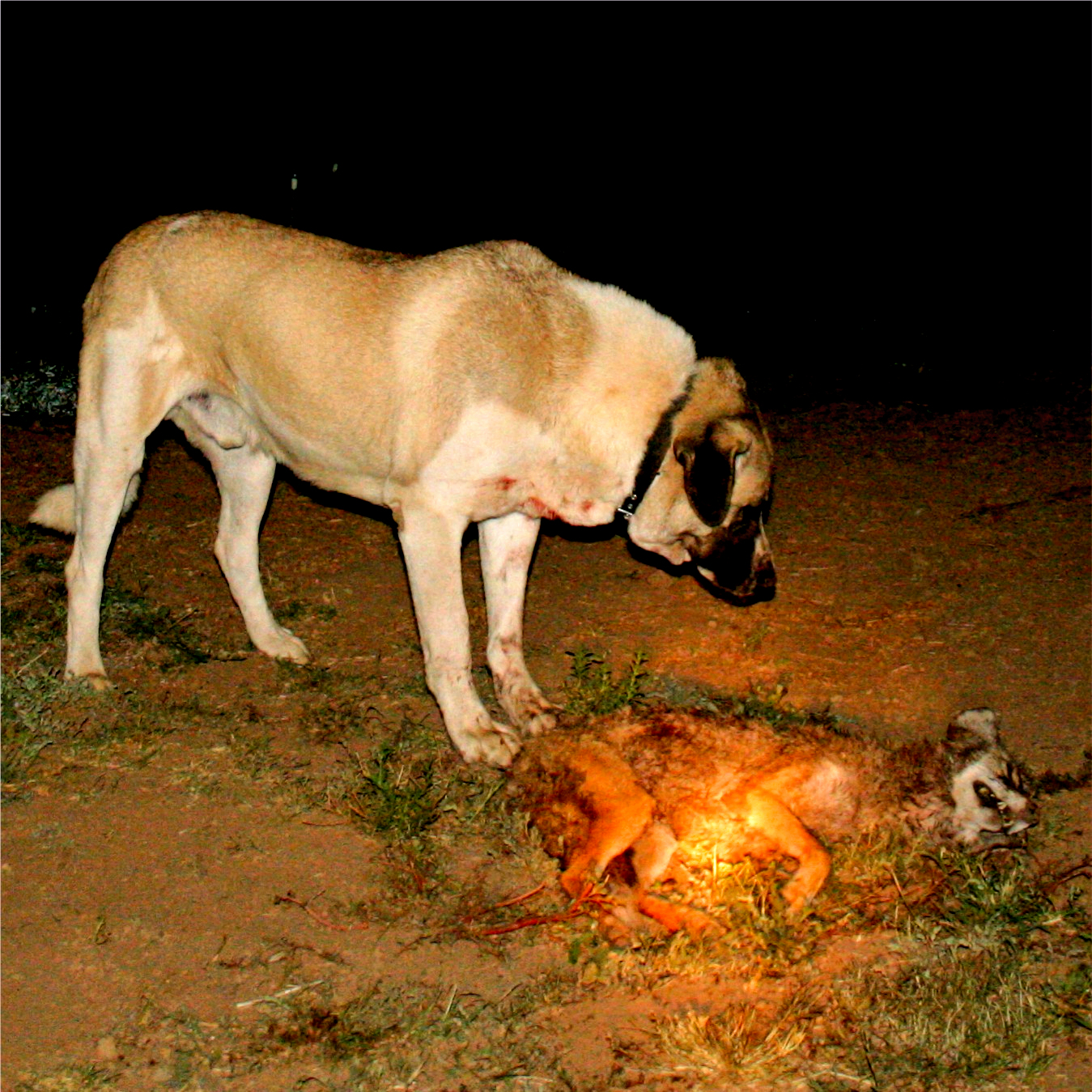
LUCKY HIT'S Shadow BEAU (BEAU)
on September 11, 2006 protecting his geese from coyote invaders.
Never forget that an Anatolian must possess both superior protective abilities AND superior nurturing qualities - both in abundance!
BEAU was all business while eliminating the two coyotes who had invaded his property to snatch a couple of geese.
However, immediately after BEAU eliminated the threat, BEAU became calm and sweet once again.
Anatolians MUST be able to be both loving and ferocious, each in the appropriate situation.
Responsible Preservation Breeders test for BOTH qualities and their expression at the appropriate times!
Testing for these qualities requires that all breeding Anatolians live with sheep and/or goats in a predator rich environment 24/7!
I consider Anatolian "breeders" who breed Anatolians without properly testing them for superior working ability to be PUPPY MILLS!
No matter what else they say they test for, they have failed to test for THE ESSENTIAL ASPECT OF THE BREED, SUPERIOR WORKING ABILITY!
BREEDERS - How are you testing your breeding Anatolians for superior working ability?
|
Do the sire and dam being considered for breeding have what it takes to unfailingly meet a
large, powerful and aggressive predator or predator pack with sufficient aggression to ensure
their charges are safe? Would they fight to protect their charges no matter the odds
or would they turn and run, like many American lines of livestock protection dogs now do?
Are you interested in owning a beautiful livestock "guardian" dog who is useless
when the predators are serious, large, powerful, and dangerous or are you interested
in actual breed preservation concerned with preserving those qualities necessary to
maintain serious and dedicated livestock guardians?
In addition to the power, speed, and aggression to protect their flock, it is also
vital that Anatolians possess powerfully nurturing and loving urges toward
their charges. They need to be patient, caring and loving around those they protect.
Powerfully aggressive and lovingly nurturing are diametrically opposing traits,
both of which must co-exist in superior working Anatolians despite the conflicting nature
of these traits. Even more challenging, each trait must exist at the highest level possible.
This article discusses one way I look for the softer, sweeter side of my otherwise powerful and
dominant Anatolians. When raising my pups, they are not only with their Mom and
goats in the pasture (from at least three weeks of age). I include their Dad (or
a junior male I'm considering for breeding when the pups resulted from an outcross) and sometimes a couple
of young females (eight months to two years or so) to evaulate the true nurturing
ability of these puppy caretakers.
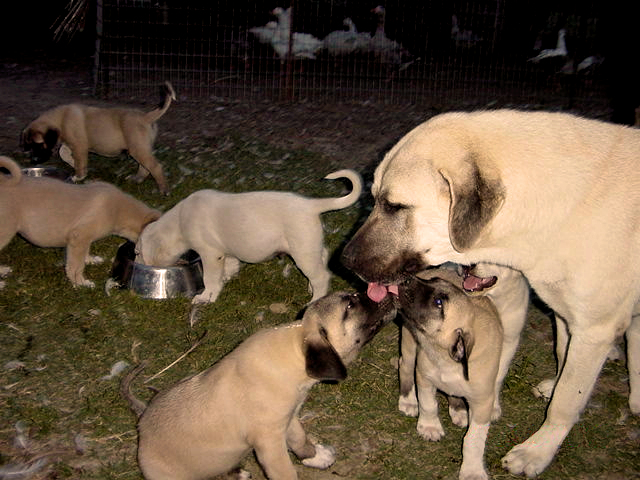
Lucky Hit's Shadow Kasif (CASE) , cleaning pups from his first litter after they have eaten.
This type of interaction from the pups' sire not only provides information about the nurturing ability of the sire,
it also allows greater group cohesion when maintaining a number of Anatolians in the same pasture. Of course, if
a breeder worries that their male can't be trusted with his pups, perhaps that male can't be trusted. In which case,
I can't imagine why a "breeder" ever considered that Anatolian, one they didn't trust with puppies, to be a breeding
quality male in the first place.
|
I believe that if an Anatolian can't be trusted
with puppies, especially their own, that Anatolian can't be truly trusted with livestock
and should never be bred! After all, the majority of pups from most litters are
going to a home where they will be used for some level of livestock protection.
Even show-only breeders can perform this simple test for superior nurturing ability.
The question is... "Will they?" Or do they not trust their unproven dog's ability to be safe
and nurturing around that unproven dog's own puppies?
This begs the question - "If you don't trust your adult Anatolians with their own small puppies,
why should the person buying a puppy from you trust that puppy will grow up and be safe around
their precious kids and lambs? Or around their precious children?" When looking for an
Anatolian you might ask "Was the Sire trustworthy enough that you allowed his pups to live with him while
they were small pups?"
If I had an adult Anatolian that is easily irritated by puppies crawling all over and around them,
jumping up to lick their mouths, grabbing their tails, and generally being a cute
but rather annoying nuisance, I would think twice before breeding such an easily irritated
Anatolian. Young goats can be equally irritating but it is important in excellent
working Anatolians that they are very patient and if it just gets to be too much,
their best response is to just stand up and move elsewhere! (Of course, as an Anatolian
ages, some of them become more irritable than others. Many times this irritation is a result of pain due
to aging so is excusable and understandable as long as it doesn't go too far!)
As you can see from the picture above, I test the nurturing ability of my adults (in this case, SAHARA and CASE) as long as possible.
Even though CASE tolerated his son, SHADE, for over a year, SHADE eventually didn't want to tolerate
his sire's dominance and I had to remove him from the same pasture. Generally I need to remove intact
male pups starting about 8 to 10 months. I believe SHADE made it longer with CASE because CASE was particularly
nurturing and they were in the big pasture. Having many predators allows all Anatolians to get along
better because they are focused on protecting their charges more than petty power struggles. Also, the
large pasture gave SHADE and CASE more space so there was less friction.
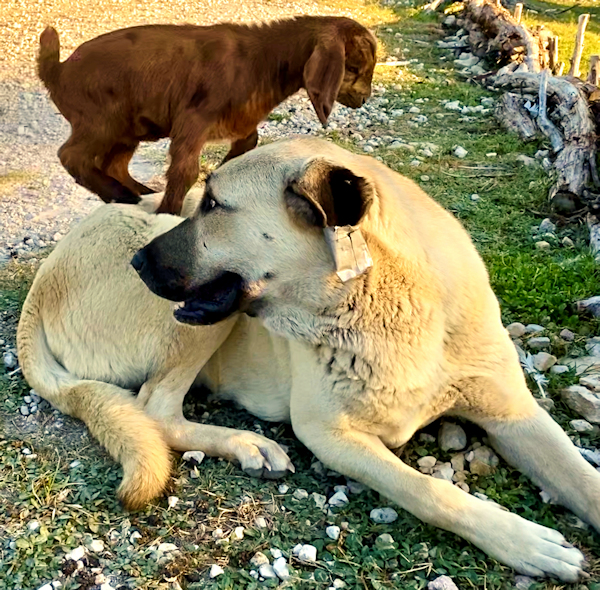
LUCKY HIT Sonra DEVAKIZ KALECI of CEDAR RISE (KIZI) on June 12, 2020,
,
demonstrates that even though she was raised as a home companion guardian until 1 1/2 years old,
with no exposure to goats or sheep after eight weeks, her nurturing ability is genetically instilled through generations
of selective breeding where working ability was the #1 consideration in all breedings!
KIZI lay down about 15 feet from this kid's mother as the goat began labor. KIZI was intently
focused on the goat so I walked over and saw two little feet poking out. I moved some
distance away to observe KIZI's natural behavior. Kizi was perfect! You can see how
much KIZI loves this particular kid, who is way to large to be jumping on and off a dog!!!
|
Decades ago, when I first began breeding Anatolians, I kept pups with their sire and have
ever since. So I am amazed when
other breeders express concern at the idea of keeping the sire with their pups. Over the
years I have heard horror stories of males tearing through their pups, killing them
brutally for no apparent reason. That is horrible, but if the male had such a low
level of true working ability, it is far better that he be eliminated from the Anatolian
gene pool rather than increasing the number of Anatolians with that type of genetics. It is
far better to purchase an Anatolian with truly proven working ability than take the
chance that the unproven bloodline you purchased has such filicidal instincts.
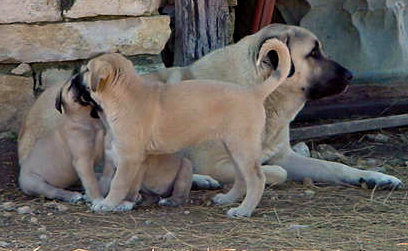
Pictured on January 8, 2005 are Lucky Hit's Shadow Tokat (TOKAT) facing right,
CHAMPION Inanna Bethany Bay of Lucky Hit (BETHANY) standing, and
one of Tokat's November 25, 2004 pups out of Lucky Hit's Tawny Autumn
(Autumn is somewhere else in this pasture).
I brought Bethany and her litter brother, Byron, back from Florida and included them
with my Tokat x Autumn litter since it is my practice to raise pups not only their dams
but also with adult males and perhaps an Aunt or Cousin.
Naturally, Tokat (being a male with proven superior working ability from dogs with
proven superior working ability) had no difficulty accepting these two
pups, one from a different breeding!
|
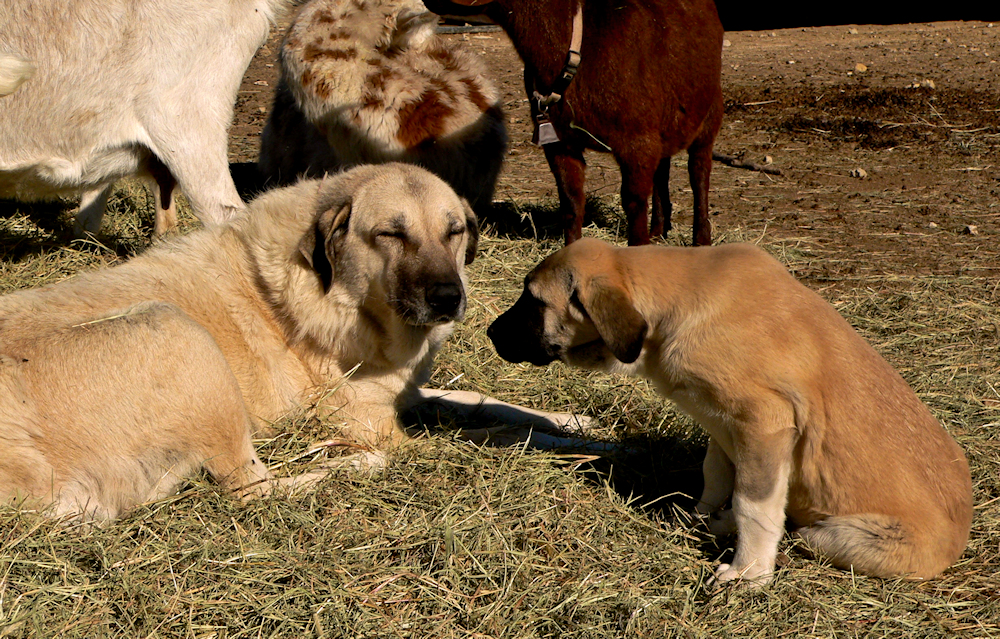
Pictured on December 31, 2006 are Lucky Hit's Shadow Kasif (CASE)
lying on ground squinting at 2 1/2 month old,
Lucky Hit Sahara Kizil (KIZIL), a daughter of
Champion Birinci's Yashi (who was living in Florida)
and
Lucky Hit Shadow Sahara, also in the pasture but not pictured here.
As always, CASE is completely trustworthy with pups, even those not his own.
When my Anatolians squint their eyes, like CASE is doing here, they are saying
they are fine with you being there and that they have no aggressive intent. Since
Kizil approached Case respectfully, Case is signaling to Kizil that all is well
and he is fine with her presence!
|
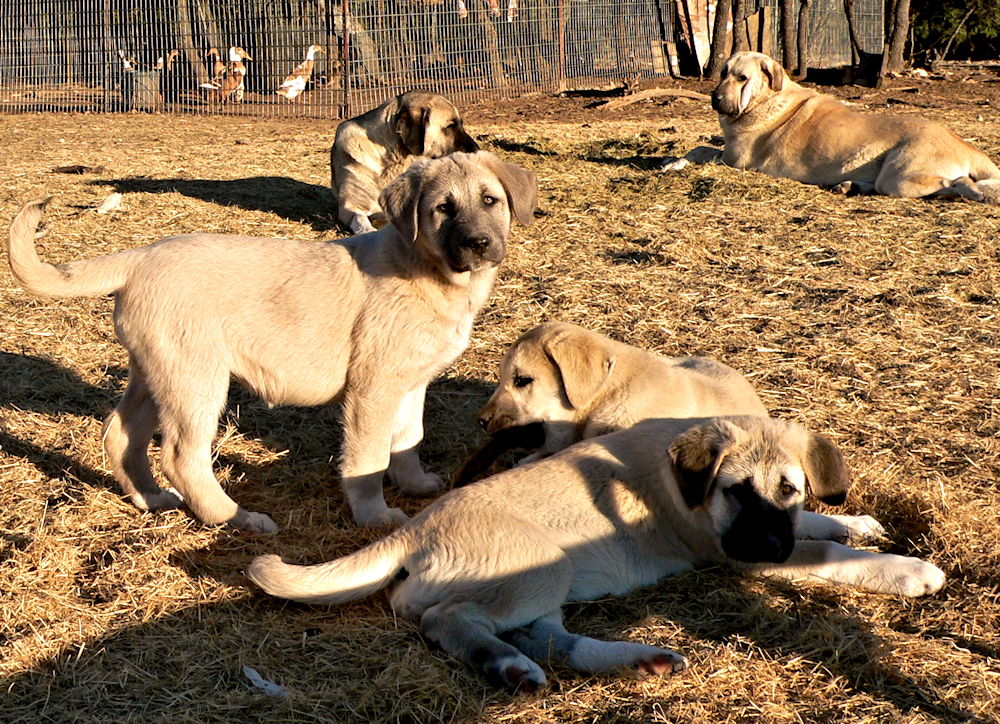
Pictured on December 27, 2006 are three siblings: CHAMPION Lucky Hit Shadow Lavanta (LAVANTA)
standing and looking at the camera at 2 1/2 month old,
with her sister, Lucky Hit Shadow Hannah (also Yurek, which means heart), and their brother,
lying down behind Hannah (Yurek), Champion Lucky Hit Shadow ZIRVA (ZIRVA).
In the background are Lucky Hit Shadow Sahara and Inanna Byron Bay of Lucky Hit (Byron).
Also in this pasture are goats and llamas. The ducks are released only under my supervision with pups this age.
BYRON is the sire of the three puppies pictured and Sahara is their older half sister.
LAVANTA was the FIRST EVER FEMALE GRAND CHAMPION and BEST OPPOSITE SEX AT THE 2010 NATIONAL SPECIALTY.
ZIRVA was a MULTIPLE GROUP PLACING CHAMPION SPECIAL and was AKC's #3 ANATOLIAN TWO YEARS IN A ROW.
Anyone seriously interested in determining the level of nurturing and maternal ability in their breeding
Anatolians will raise their litters with the parents and older siblings or cousins. If there is a question
whether or not any dog can be trusted with puppies, I wouldn't trust that dog. I would permanently
remove that dog from my breeding program!! These are Anatolian guardian dogs. If their guardian ability
is so seriously in question a breeder can't trust that dog with puppies, NEVER BREED THAT DOG!!!
Special note to show-only breeders... I always am told you can't raise your Anatolians with goats and/or sheep
because you aren't set up for it. Testing your adults with your pups is a method you can use to test one aspect
of actual working ability without needing sheep and/or goats! I already consider Anatolian "breeders" who don't
test their breeding stock for working ability as glorified puppy mill breeders since working ability
encompasses more than 95% of the traits and abilities required in producing excellent Anatolians. And don't tell
me how dedicated you are to health testing. Health testing is good but testing for working ability is essential for
all responsible breeders. No excuse is acceptable if you fail to test the nurturing aspect of your adult breeding Anatolian's
working ability by keeping adults with young pups. If you won't even do this simple test, I don't think you actually care about
Anatolian working ability!
|
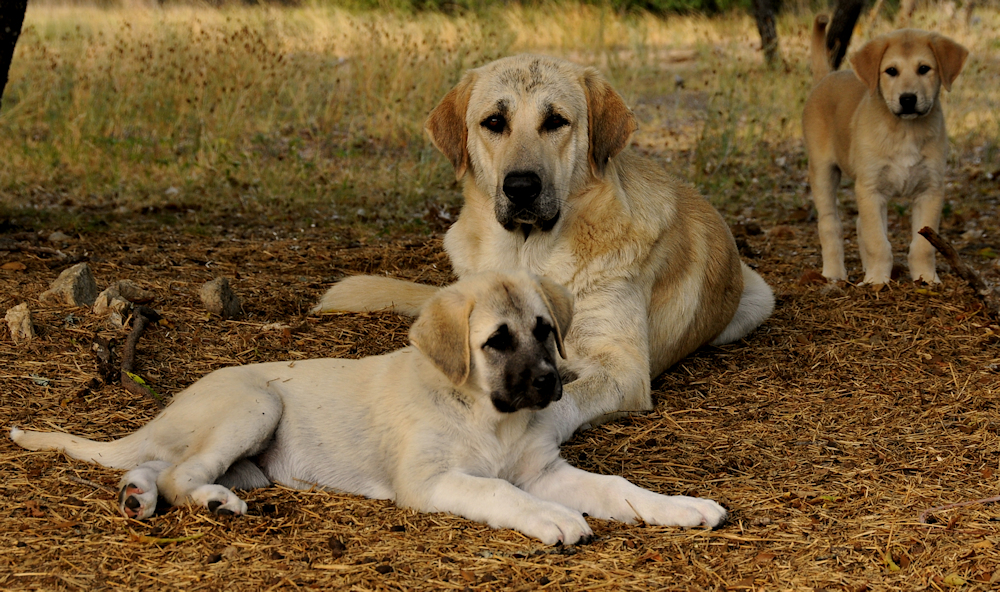
Pictured on July 5, 2008 are CHAMPION LUCKY HIT Shadow PATLICAN (PATLICAN) , the adult.
The pups are the pick of the litter male and female from the May 1, 2008, Bethany x Case litter.
Lying in front of Patlican is
CHAMPION LUCKY HIT Bethany KUVVET (KUVVET).
KUVVET'S litter brother,
CHAMPION LUCKY HIT Bethany NAZIK (NAZIK) is standing to the right.
Several other adult Anatolians and other Bethany x Case pups were also in the pasture with goats, ducks, and llamas.
Patlican formed a special bond with these pups, especially Nazik, that lasted through out their lives. I have seen
that Anatolian puppies raised with adult and young adult Anatolians as well as goats and other animals have
better communication skills with other Anatolians. Even when they argue, they tend to use less aggression
and less force, making it more of a communication. This leads to greater harmony when several dogs are in
the same pasture.
|
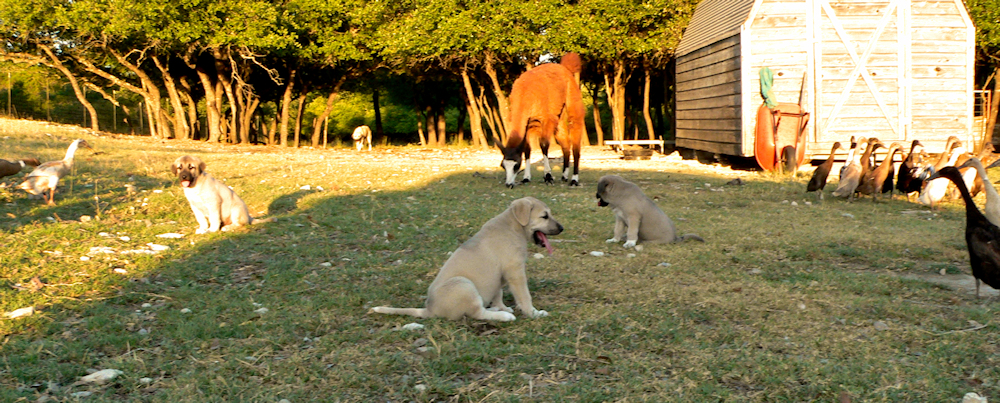
Pictured on June 15, 2008 are CHAMPION INANNA BETHANY BAY OF LUCKY HIT (BETHANY).
She is the adult seen in the background and the dam of the pups.
The pups are from the May 1, 2008, Bethany x Case litter. Five of these nine puppies
were shown and all five received Championships.
Some of these five pups were multiple group placing Anatolians and one,
CHAMPION LUCKY HIT Bethany NAZIK (NAZIK) was AKC's Top Producing Male for 2012.
Other Bethany x Case pups were also in the pasture with goats, ducks, and llamas.
Below is picture of CHAMPION INANNA BETHANY BAY OF LUCKY HIT (BETHANY)
with CHAMPION LUCKY HIT Shadow PATLICAN (PATLICAN).
BETHANY nursed this first litter for 14 weeks. As long as the pups wanted milk, BETHANY
stood for them to drink. Finally, her body stopped producing milk so the pups would do
a quick check and then give up. In addition to BETHANY'S excellent maternal ability to
produce lots of milk for a long time, BETHANY started vomiting food for her pups when
they were about five weeks old. Another excellent primitive trait I desire in my Anatolians!
The puppy pictured below is CHAMPION LUCKY HIT Bethany KESKIN (KESKIN).
He not only developed into an amazing working Anatolian, he also was an amazing show Anatolians as well!!!

Over the years, many different people have called me to discuss obtaining a LUCKY HIT puppy.
Frequently they mention that "another breeder" said that my dogs were "VERY SHARP."
Yes, my Anatolians have the internal power of the original Anatolians imported from
Turkey. Thank you!!! My dogs do protect!!! I believe in breed preservation, which requires Anatolians be selected for
a certain level of internal power... sufficient to stop serious predators including
wolf packs, bears, mountain lions, etc.
But you can also see that I believe in preserving
another aspect of the breed... their nurturing and loving side. They have to have
both traits in abundance for me to consider them a suitable breeding prospect. If
you don't want or need the power, please don't buy an Anatolian! If you aren't
willing to do the work to develop your puppy correctly, please don't buy an Anatolian!
And as a breeder, if you are only interested in racking up high AKC awards but
ignore the traits and behaviors that are required in superior working Anatolians, please
switch to another breed.
Perhaps the most important trait of all to look for in a breeding Anatolian is
discernment anchored with stability. It is vital that Anatolians are able to evaluate every situation and
make the correct response. Looking for breeding prospects from Anatolians who have
demonstrated the greatest level of intelligence and shown they have unerringly accurate
discernment and stability is essential. Watching your Anatolians with sheep and/or goats, chickens,
ducks, geese, llamas, horses, and cows provides so much more information than just
watching them on the couch or at a dog show! Seeing how they deal with serious and
dedicated predators adds to your complete understanding. And raising adults with
very young pups adds yet another level of understanding about the nurturing and maternal
genetics your Anatolians possess!
|
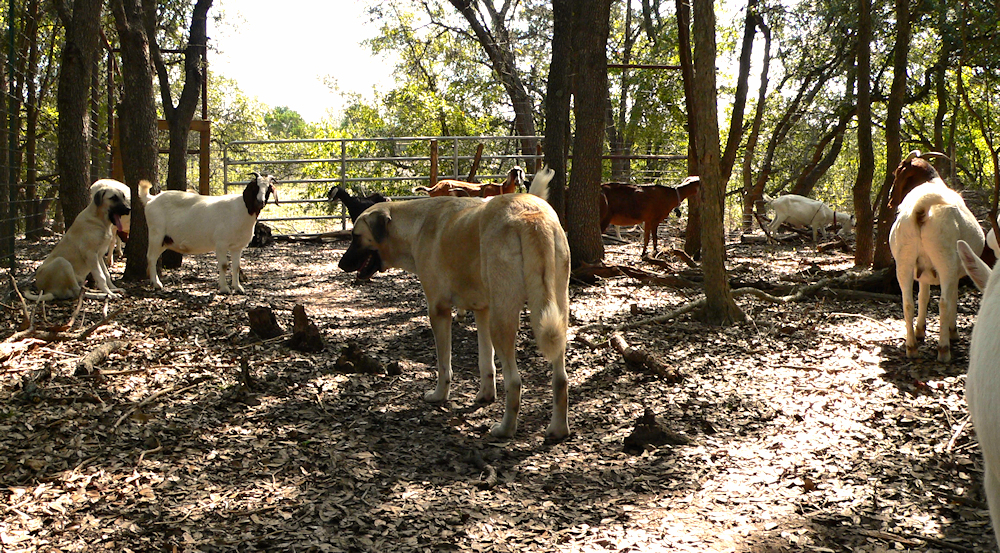
Pictured on October 19, 2009 are CHAMPION LUCKY HIT Cosette AYLA (AYLA) , the adult in the center, and
sitting to the left when six months old is the Tokat x Tootie male puppy from their April 4, 2009 litter,
LUCKY HIT Two Socks KAVHE (KAVHE).
KAVHE is a litter brother to LUCKY HIT Two Socks BAHAR (BAHAR) .
As is my custom in order to properly evaluate the working ability and temperament of my Anatolians, KAVHE and BAHAR and several adult Anatolians
lived in the pasture with numerous goats, ducks, and llamas.
Anatolians who live and interact with animals (from aggressive goats to tempting ducks with flapping wings) demonstrate many traits that
can be revealed in no other way. Only breeders who have taken the time, trouble, and effort to raise their Anatolians in a real world
working situation have the ability to obtain an in depth understanding of the true temperament, demeanor, and behaviors of their Anatolians.
To be considered an Anatolian Breed Preservationist, an Anatolian breeder MUST raise their Anatolians in a true working situation! (ie. 24/7 with sheep
and or goats in a predator rich environment)
|
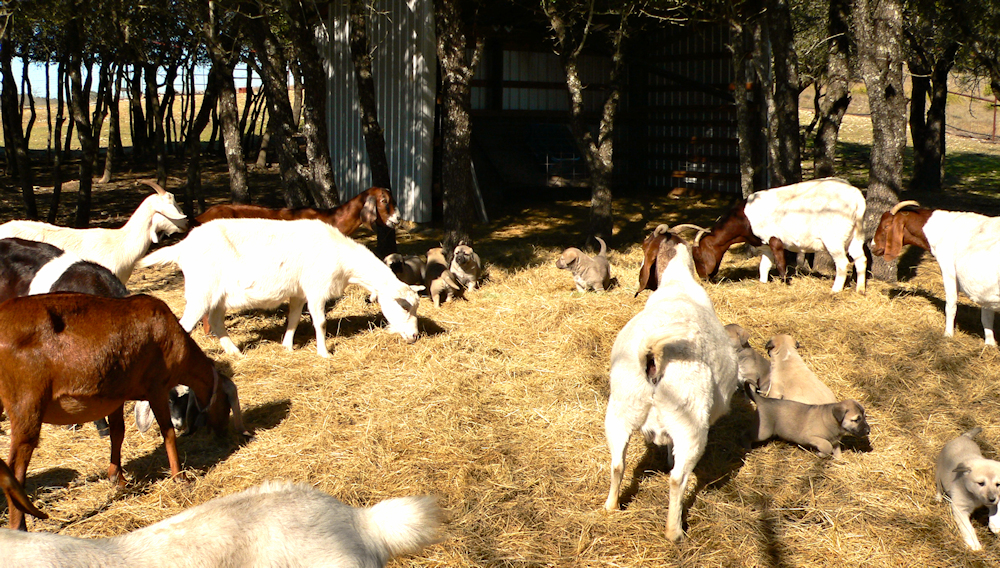
Pictured on December 13, 2009 are puppies from LUCKY HIT Shadow KASIF (CASE) and
CHAMPION Inanna BETHANY Bay of LUCKY HIT
Their first litter produced five CHAMPIONS from their nine puppies. This litter produced six CHAMPIONS from their ten puppies.
This litter was placed outside by three weeks of age in the shed you see in the picture with my goats, adult dogs, including their sire,
and llamas. FOR ANATOLIANS, AKC CHAMPIONSHIPS ARE WORTHLESS IF THE DOG'S WORKING ABILITY HAS NOT BEEN PROVEN OVER TIME WITH SHEEP AND/OR
GOATS IN A PREDATOR RICH ENVIRONMENT!
Early sheep and/or goat interactions are valuable and important. While I worry about my pups, because I love them,
I trust their thousands of years of genetic selection for superior working working ability will allow them to live in their natural
environment successfully and safely! Over decades I have seen this to be true. As a breeder, I believe if I were too concerned
about the safety of my pups to place them outside with sheep and/or goats, I might not have been using superior
working ability as my primary selection criteria!!! Luckily, from my very first Anatolian obtained in 1985, I have placed my
puppies with my flock animals as young puppies. I also have trusted the working ability of my males and other adults
and placed them in the same pasture.
|
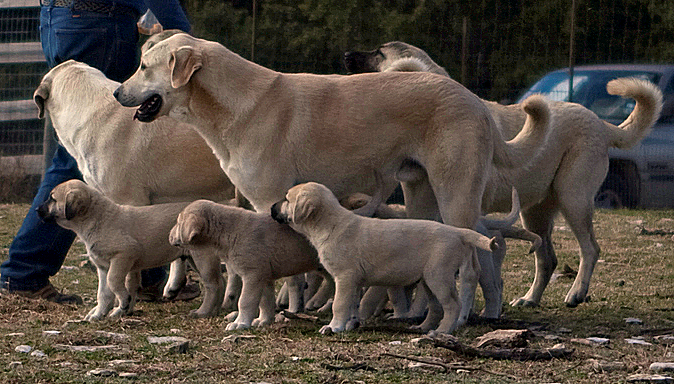
Pictured on December 31, 2009 are puppies from the litter between LUCKY HIT Shadow KASIF (CASE) and
CHAMPION Inanna BETHANY Bay of LUCKY HIT
The adult male in the middle is CHAMPION LUCKY HIT Shadow ZIRVA (ZIRVA), a CASE half brother.
I'm not certain who the other two adults are.
Moving in various adult dogs with puppies provides the puppies excellent examples of behavior... that is, if
your adults display excellent behaviors. Adults with poor behaviors should NEVER be placed in the same pasture
as puppies. And of course, those dogs with poor behaviors should NEVER be bred!
Breeders who are serious about testing for the highest level of working excellence will always
test their adults by having them live with puppies. Their interactions with puppies provide
clues to their interactions with lambs and kids. As always, if you are afraid that your
adult dogs can't be trusted with puppies, please don't place them in with puppies! And
by all means, PLEASE DON'T EVER BREED THEM!!!!
If you have an Anatolian (either male or female) whose maternal instincts are so bad that
that dog can't be trusted with puppies, YOU DO NOT HAVE A BREEDING QUALITY ANATOLIAN!!!
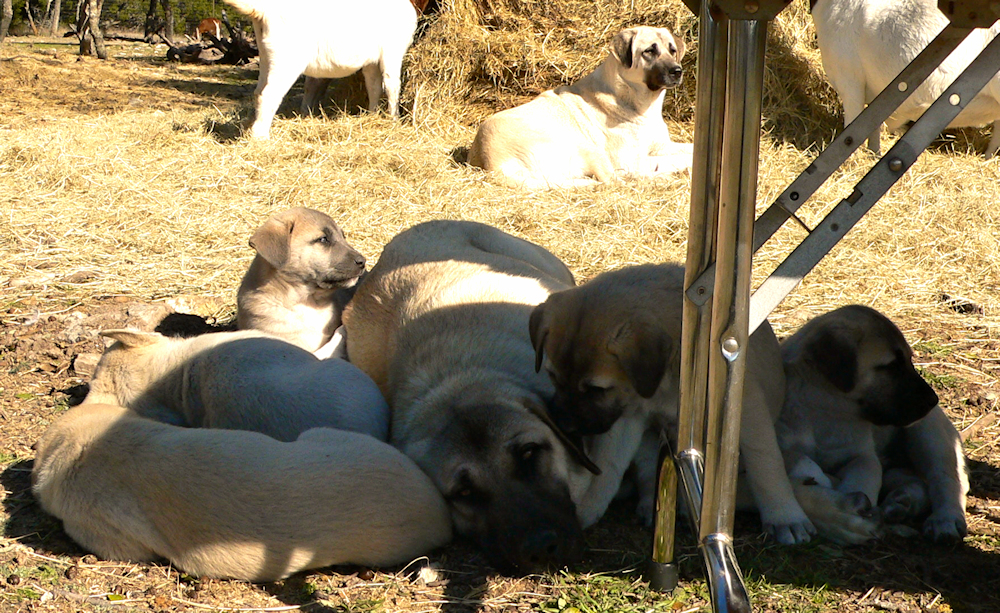
Pictured on December 26, 2009 are more puppies from the 2009 Bethany/Case litter.
They are waiting to be examined on the table. A young male is lying on the ground
surrounded by the puppies. The pups see his calmness and are also calm. A female
watches from the background near her goats.
|
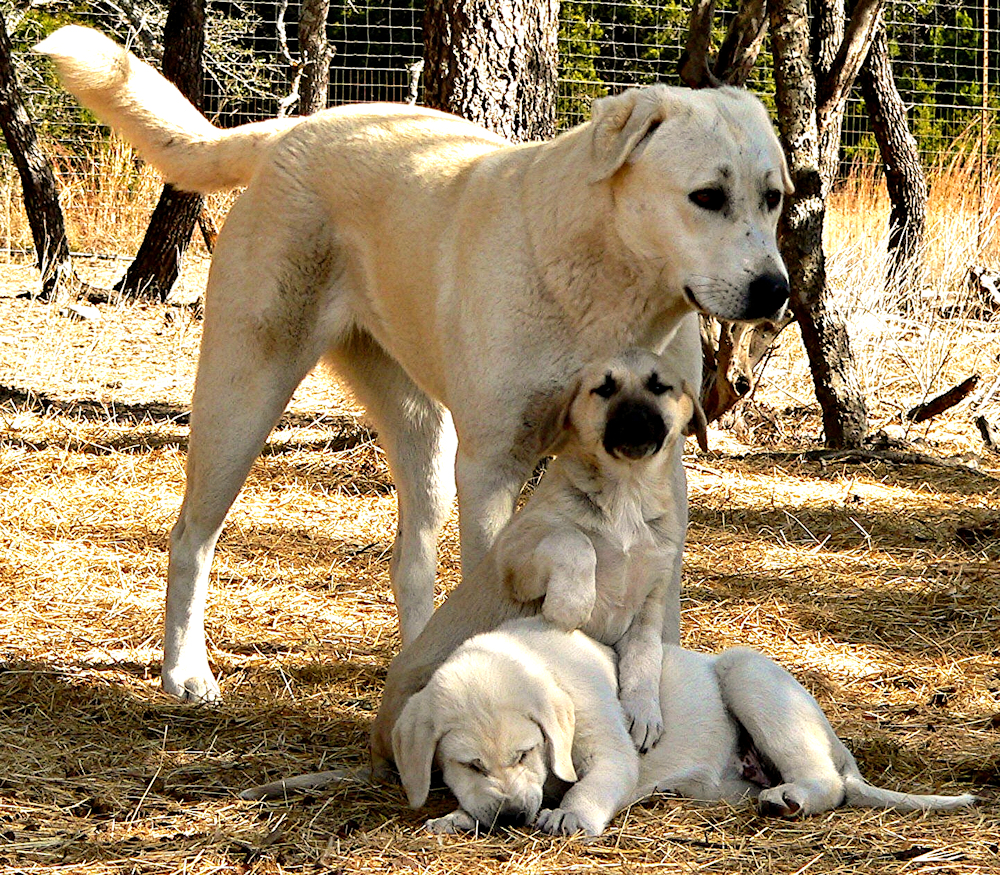
Pictured on January 5, 2011 are CHAMPION LUCKY HIT Bethany KAMIL (KAMIL) , the adult
female. KAMIL is standing over
CHAMPION LUCKY HIT Bria NARIN Arcadia (NARIN) (sitting) and LUCKY HIT Bria SESSIZ Arcadia (SESSIZ) (lying).
NARIN and SESSIZ came from a beautiful OFA EXCELLENT LUCKY HIT female,
LUCKY HIT Akasma BRIA (BRIA)
BRIA is out of
CHAMPION Birinci's YAHSI of LUCKY HIT (YAHSI) and
LUCKY HIT Autumn AKASMA (AKASMA)
You can see by her posture that KAMIL, even though not their mother, has taken a protective stance over the pups!
These two pups were born and raised (until eight weeks) elsewhere, and Kamil
has adopted them and has assumed the role of their protector! Since I have tested
all my Anatolians for excellent maternal traits toward puppies beginning with my first litter
several decades ago, I am confident I will see this type of protective and loving
behavior from all my adult dogs toward young Anatolian puppies. There is a definite
correlation between excellent maternal behaviors toward puppies and excellent
maternal behaviors toward kids and lambs!!!
"BREEDERS" who don't test for working ability with sheep and/or goats in a predator
rich enviornment should AT LEAST be testing for maternal behaviors by placing their
adults with their puppies. If an Adult Anatolian is too rough and/or kills a pup,
that "breeder" should immediately neuter that Anatolian, no matter how many awards
and show honors that dog may have received!!! Anatolians who demonstrate poor working
ability should NEVER be bred! (Of course, as a breeder, you need to be able to recognize
both excellent and poor quality working ability! That might be quite a challenge if
you are not raising your Anatolians with sheep and/or goats in a predator rich
environment.)
When breeding Anatolians, breeding
for superior working ability is a breeder's primary responsibility. No other trait
or quality can trump Anatolian working ability!!! After all, that was the single
focus in the development of the breed in Turkey for thousands of years, making
working ability the essence of the breed!!!!
|
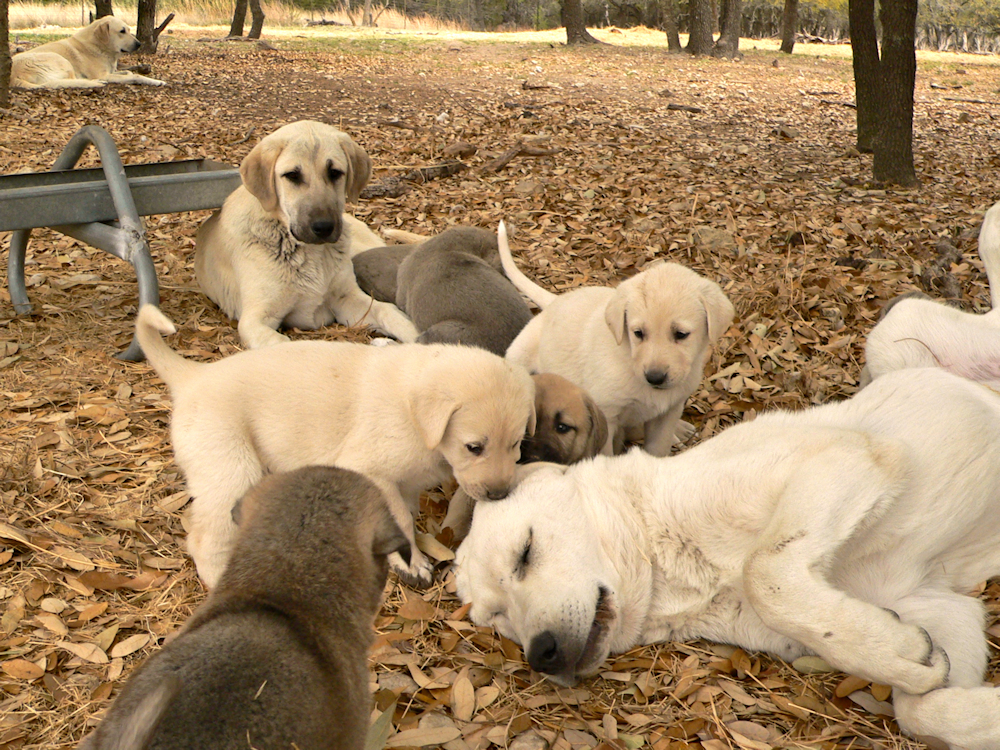
Pictured on March 27, 2011 are the two female now five month old puppies seen as young pups in the picture above with Kamil...
See how beautifully they allow the NAZIK/KIZZIE puppies to play with them. They are clearly enjoying the pups!
CHAMPION LUCKY HIT Bria NARIN Arcadia (NARIN), is the fawn with black mask female, and
LUCKY HIT Bria SESSIZ Arcadia (SESSIZ), is the biscuit and white Anatolian.
In the back left corner is CHAMPION LUCKY HIT Bethany NAZIK (NAZIK) , the sire of all the puppies pictured.
NAZIK, a fading blue mask male, is one the finest male Anatolian's I've ever produced. Both his conformation and his working ability are absolutely top of the mark!
Nazik lived in the pasture with Kizzie (the pups' mom), his Kizzie puppies, his two young pups from Bria, and his goats, ducks, and llamas.
It is so gratifying to see
the amazing maternal instincts in Anatolians being bred where Breed Preservation is a priority. Of course, only when one
selects for superior working ability as their primary selection criterion can one be considered a Breed Preservationist!!!
I'm uncertain of who these Nazik/Kizzie pups are, except for the biscuit and white puppy nibbling on Sessiz's ear! She is
CHAMPION LUCKY HIT DivaKiz KAYA (KAYA), owned by Heidi Krol of Stonecoat Anatolians.
Since this picture was taken, KAYA has produced at least seven Champions, three from her first litter and four from her second
litter. Two more pups from Kaya's second litter are almost to their CHAMPIONSHIPS! Kaya was designated an Anatolian Shepherd Dog Club
of America DAM OF MERIT, September, 2020. This is a prestigious award only given to bitches that produce at least 5 AKC Champions!
KAYA is also the granddam of numerous Champions!
Another one of these pups might be CHAMPION LUCKY HIT DivaKiz SONRA (SONRA), who is also
a PRODUCER OF MULTIPLE CHAMPIONS with superior working ability!
Watching the carefulness and sweetness my dogs take with their newborn kids and young pups, I feel I have been successful
in breeding the correct guardian qualities into my lines. My Anatolians have also proven that whenever it is necessary, the "lion"
inside them appears! I have repeatedly seen that my dogs are willing to give their lives to protect me and their charges!
|
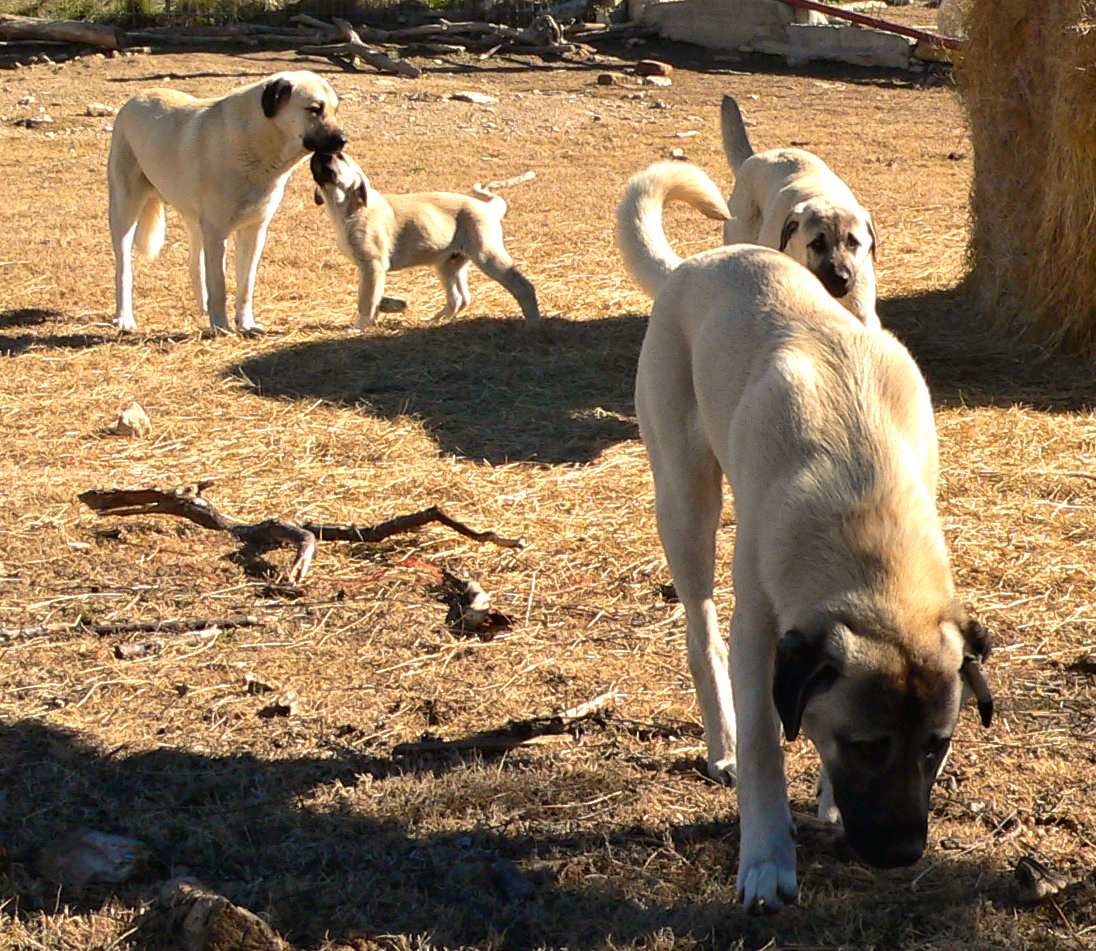
Pictured on January 18, 2015 are LUCKY HIT Kuvvet KIBAR (KIBAR) (adult male upper left)
being greeted by his sire's (CH LUCKY HIT Bethany NAZIK's)
brother's (CH LUCKY HIT Bethany YAMAN'S) son,
CEDAR RISE TUPELO HONEY of LUCKY HIT (TUPE) and
two of KIBAR'S pups from KIBAR'S August 1, 2014, litter with LUCKY HIT DivaKiz LEYDI (LEYDI),
LUCKY HIT Kuvvet STELLA and LUCKY HIT Kuvvet BAKIM.
You can see yet another LUCKY HIT adult who is raising not only his pups, but also one I brought in who is a bit younger.
ALL RESPONSIBLE BREEDERS WHO WANT TO INSURE THEY HAVE STRONG WORKING ABILITY IN THEIR LINES WILL RAISE THEIR PUPS WITH THOSE PUPS' SIRE
OR ANOTHER MALE THAT BREEDER IS CONSIDERING USING AS A BREEDING MALE. IN ADDITION, FEMALE COUSINS, AUNTS, ETC. SHOULD BE PLACED WITH THE
PUPS TO TEST THEM AS WELL. WHILE SHOW-ONLY BREEDERS CAN CLAIM THEY CAN'T TEST FOR WORKING ABILITY WITH SHEEP AND/OR GOATS IN A PREDATOR
RICH ENVIRONMENT (AS THEY SHOULD IF INTERESTED IN BREED PRESERVATION), IF THEY HAVE MORE THAN ONE BREEDING ANATOLIAN THEY CAN ALWAYS
TEST FOR MATERNAL ABILITY BY PLACING ANATOLIANS IN WITH THE DAM AND HER PUPS.
IF THEY DON'T TRUST THEIR ANATOLIANS ENOUGH TO PLACE THEM WITH THEIR PUPS, THEY SHOULD NEVER BREED THOSE UNTRUSTED ANATOLIANS!
EVER!!!! ANATOLIANS WHO CAN'T BE TRUSTED WITH PUPS GENERALLY CAN'T BE TRUSTED WITH KIDS AND LAMBS!
|
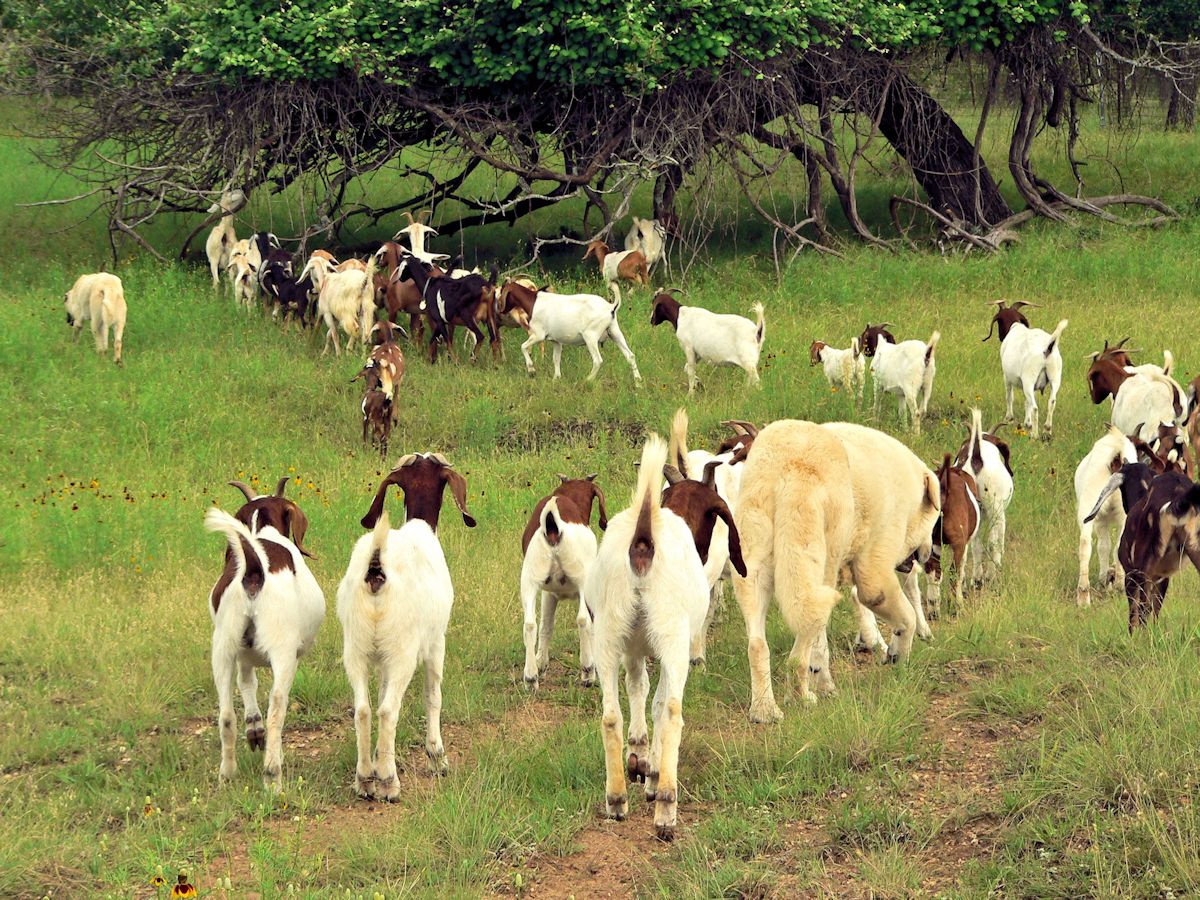
Pictured here on May 18, 2015, moving through the pasture with three other Anatolians is nine month old
CASE JR (LUCKY HIT Leydi CASE)
(the dog near the front on the left side of the picture) as the goats head out to begin the day's grazing.
Click this link to see more about CASE JR and "THE FOLLOWING INSTINCT."
As usual, CASE Jr is accompanied by CHAMPION LUCKY HIT Shadow ZIRVA (ZIRVA), the male near the camera,
CEDAR RISE Tupelo Honey (TUPE)
(not in this picture) and LUCKY HIT Sahara BENEK (BENEK) (also not in this picture).
ZIRVA and BENEK are almost nine years old in this picture.
Lucky Hit Sahara Benek was bringing up the very rear and Cedar Rise Tupelo Honey (TUPE)
was off camera at the front of the herd.
I am thrilled to have produced a male like Zirva who has no
trouble getting along with either the six month old male, Tupe, or the nine month old male, Case Jr. It also speaks
well of the two young males that they are more interested in protecting the herd than fighting an older dog that
is clearly NOT a threat to the herd!
At this age, however, I watch the male interactions very carefully. A few months
later, when a female went into heat, I had to separate the males. The entire time I've bred Anatolians I've seen
that adult intact male can NEVER be kept together unless you don't care if they are injured and/or killed vying for
pasture dominance! (I care!) Anatolian males can't be kept together forever, no matter how wonderful their maternal instincts!
At some point, their desire to insure they have total control of their area takes over!!
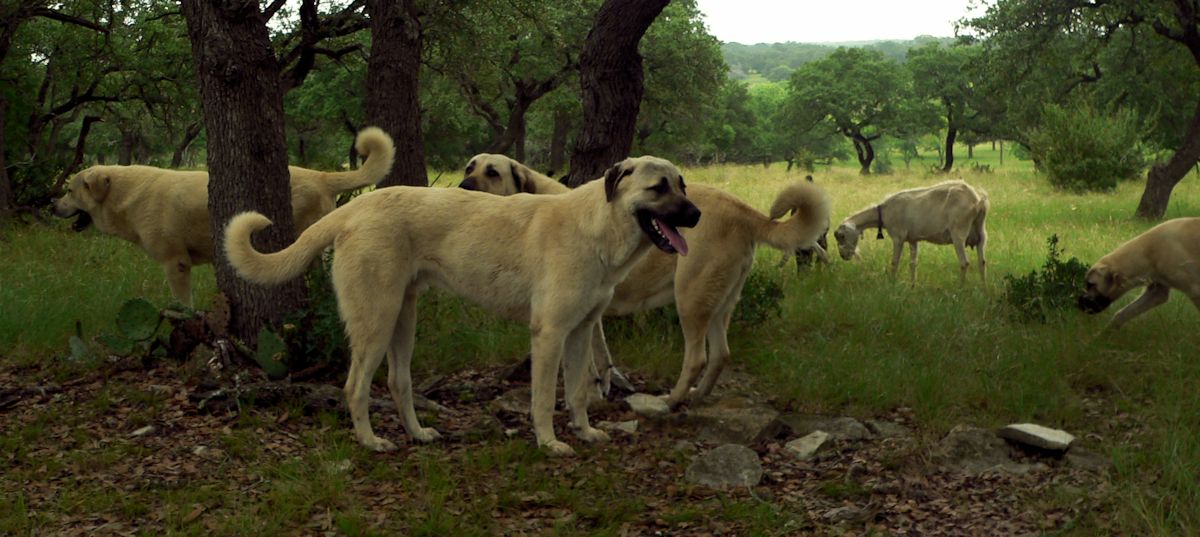
CASE JR (center), ZIRVA (left), BENEK (behind CASE JR), and TUPE (on right) all together guarding their goats in the big pasture.
Knowledgable Anatolian breeders will not mistake the powerful and protective nature required in Anatolians for viscious aggression.
Anatolians must have the highest level of judgement and descernment to independently and instantaneously make correct guardian decisions!
Only by raising an Anatolian with sheep and/or goats 24/7 in a predator rich enviornment can an Anatolian's true guardian nature be revealed!
|
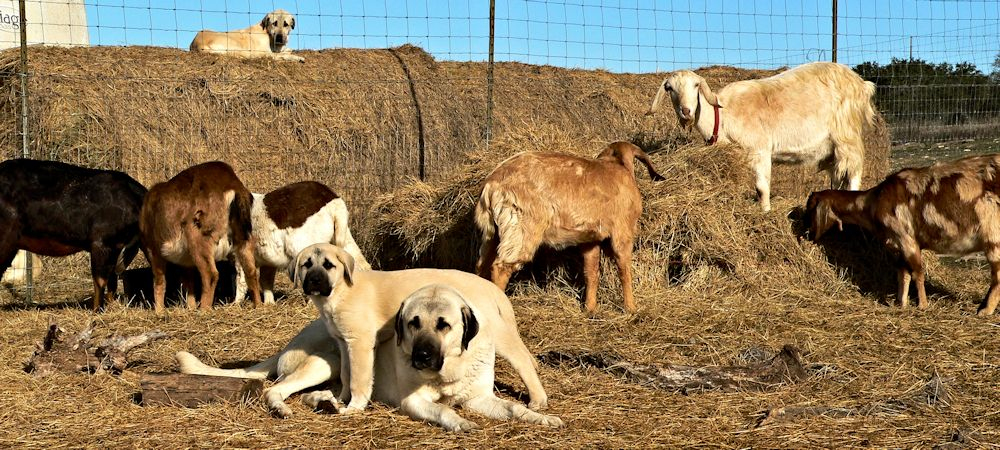
Pictured on January 16, 2015 are CHAMPION ASHLEY MANOR DIVAKIZ LUCKYHIT (KIZZIE) (adult straddled by puppy)
(CEDAR RISE Tupalo Honey (TUPE) straddling KIZZIE
and (CHAMPION INANNA BETHANY Bay of LUCKY HIT (BETHANY) , watching everything from hay bales in an adjacent pasture.
KIZZIE is TUPE'S granddam. TUPE was born at CEDAR RISE ANATOLIANS in Virginia and came to LUCKY HIT RANCH when eight weeks old.
At one point or another, I placed TUPE in with every Anatolian I had at the time. It was great experience for all my Anatolians as well as TUPE!
By now, I believe you can see how consistently I have placed my young pups (of all ages) in with my adult Anatolians!
All serious Anatolian breeders who want to understand more about the working nature of their dogs will place their pups with older adults.
Of course, if the adult seems untrustworthy with pups, the adult should not be placed with pups. In addition, I believe that that untrustworthy adult
should be neutered or spayed, no matter how many show titles and show awards the dog has earned. As breeders, we should not be breeding for "show-only." We
should be breeding for the most excellent livestock guardian abilities possible and if, in addition, they are top show quality Anatolians, even better!!!
After all, Anatolians were developed over thousands of years to be superior livestock guardians. Ignoring Anatolian working ability to pursue show-only
activities dishonors all of our Anatolians!!!
BREEDERS - What are you specifically doing in your breeding program to insure your Anatolians are being selected for superior working ability?

TUPE on January 16, 2015, sleeping securely with his grandmother, KIZZIE.
|
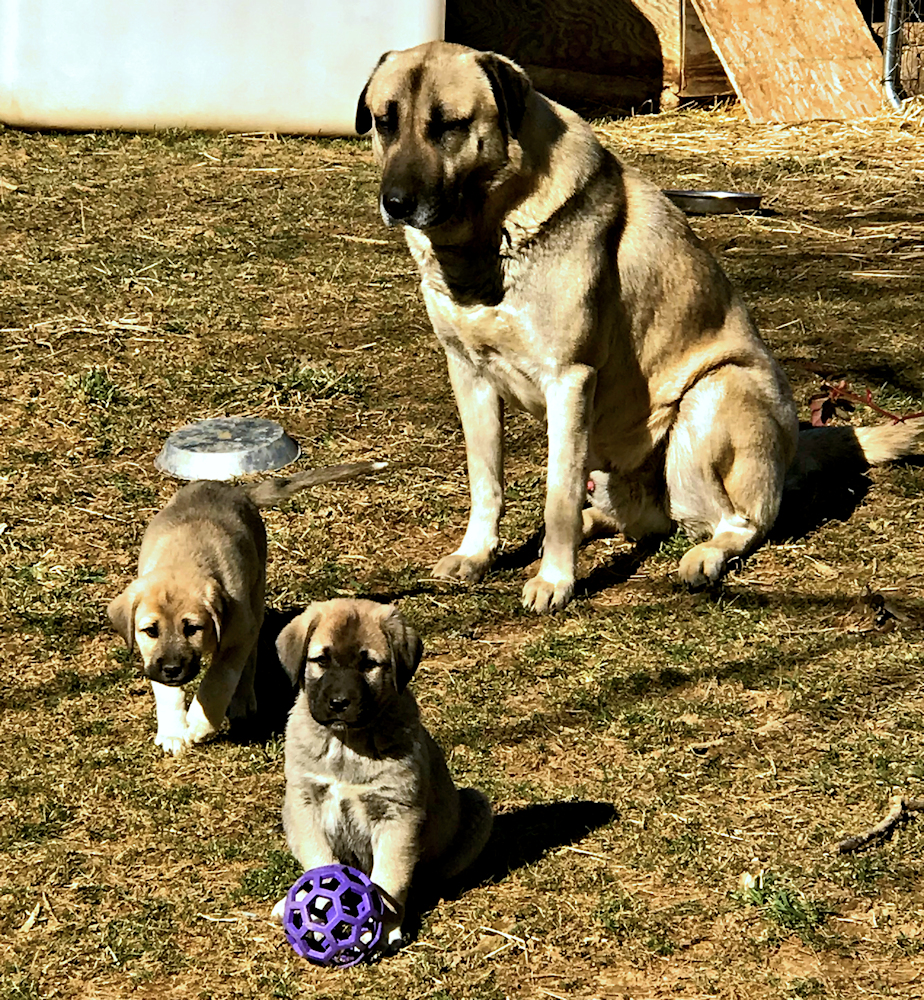
Pictured on March 7, 2021 are CHAMPION LUCKY HIT Sonra GAZI (GAZI)
watching his sister's ( CHAMPION LUCKY HIT Sonra AIYLA (AIYLA) ) pups!
BREEDERS - If you care about superior nurturing (maternal) ability you have to test for it! When you are too apprehensive
regarding your adult Anatolian's ability to be placed with your pups, do not breed that untrustworthy adult! You are
adding improper genetics to the breed!!!!
|
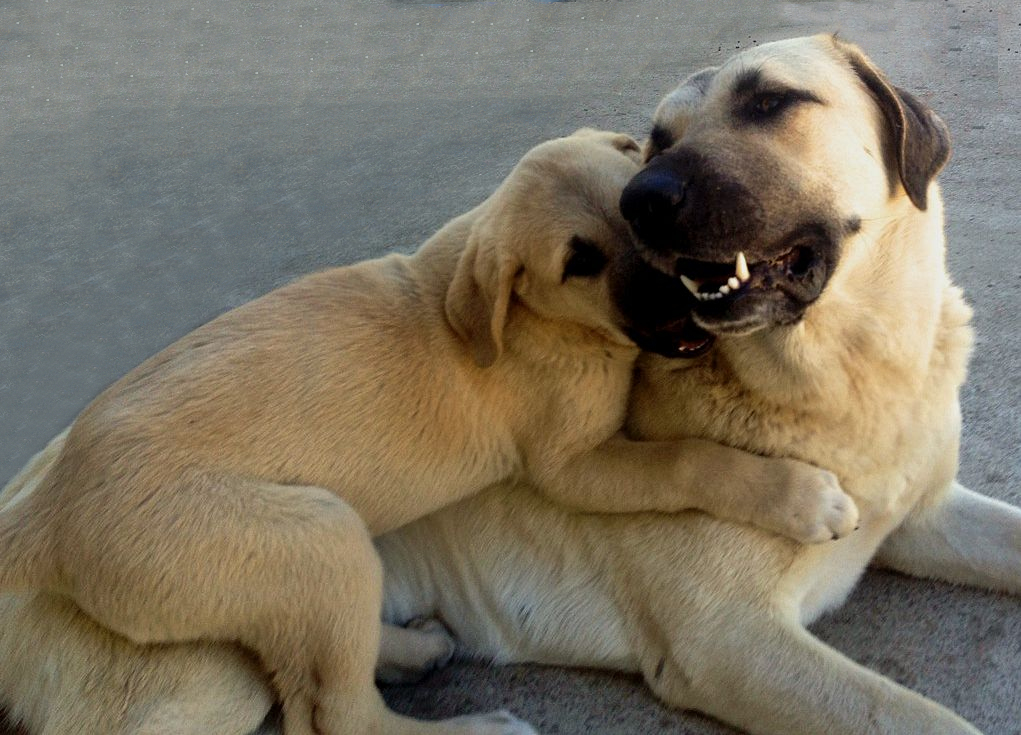
Pictured in November, 2014, are CHAMPION LUCKY HIT DivaKiz ASHURE (ASH)
playing with LUCKY HIT DivaKiz LEYDI'S (Ash's sister) daughter,
LUCKY HIT Leydi BEHIYE (BEHIYE)
If you have an older Anatolian with excellent maternal (nurturing) ability, when you obtain a new puppy
the older maternal Anatolian will aid the puppy's integration into your situation, making the puppy feel comfortable
and at home in their new situation. The pup develops a loving relationship with the older nurturing Anatolian and
will look to the older Anatolian for guidance.
Like all traits, nurturing maternal ability must be tested for in a real world situation. Is your
breeder testing for this vital and important Anatolian trait by placing pups with their breeding
Anatolian adults? Or is your breeder so insecure with their Anatolian's nurturing maternal abilities
that they have decided it is too dangerous to test for this vital Anatolian trait? My belief is
that if an Anatolian is too dangerous and untrustworthy to be placed with puppies, it should NEVER
be bred!!!!
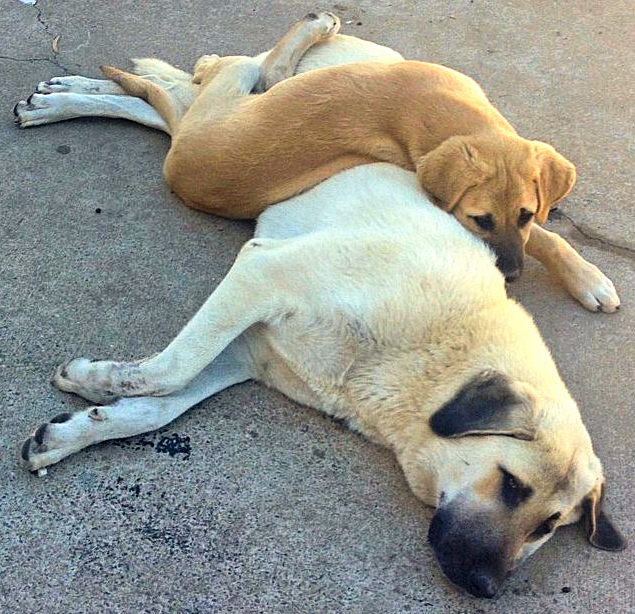
|
|
 Phone Numbers Link
Phone Numbers Link
 Phone Numbers Link
Phone Numbers Link





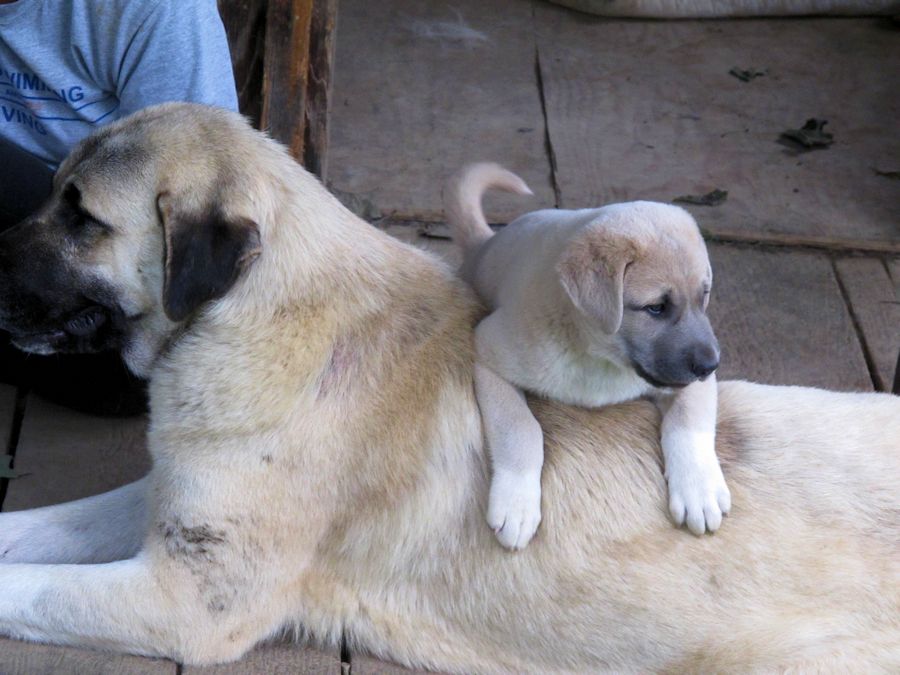



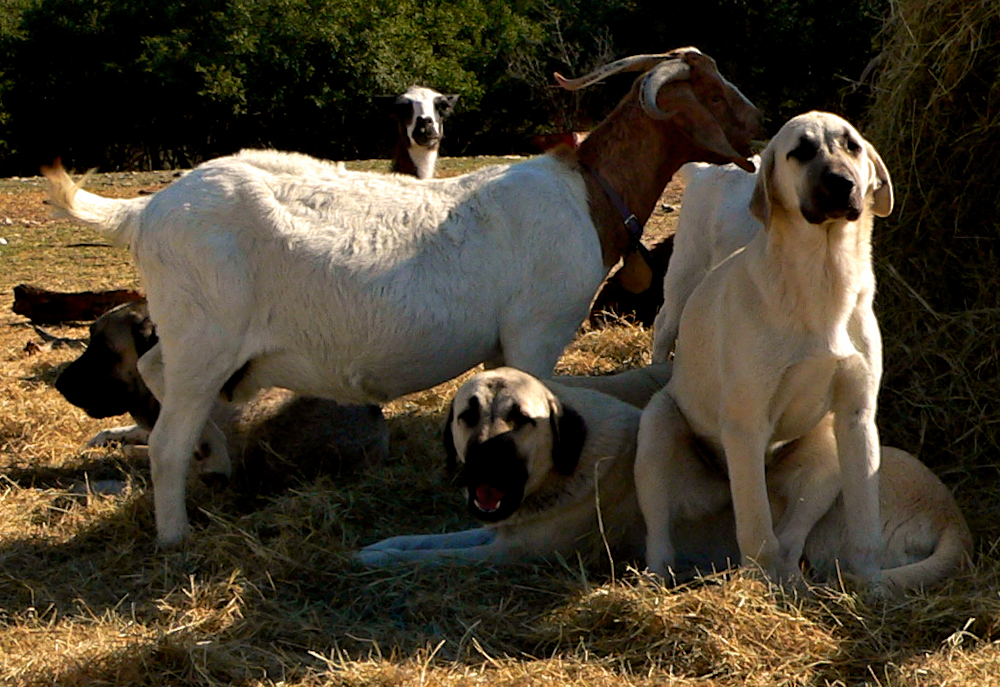



















 Click Picture to Return to Anatolian Main page
Click Picture to Return to Anatolian Main page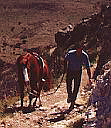 Click Picture to Return to Lucky Hit Main Home Page
Click Picture to Return to Lucky Hit Main Home Page